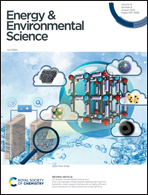Efficient interconnecting layers in monolithic all-perovskite tandem solar cells
Abstract
Tandem solar cells (TSCs) are widely recognized as an effective device architecture for overcoming the spectral loss in single-junction solar cells and surpassing the Shockley–Queisser (S–Q) limit. Organic–inorganic hybrid perovskites are an emerging class of materials for use in TSCs as light absorbers as they carry a significant set of intriguing attributes, which include tunable direct bandgaps, large absorption coefficients, high ambipolar carrier mobilities, small exciton biding energies, and solution processability. In this context, the ability to engineer all-perovskite TSCs (all-PTSCs) offers new opportunities to render low-cost, low-temperature solution-processing of photovoltaics with markedly enhanced device performance. Notably, an efficient interconnecting layer (ICL) represents a key component for high-efficiency monolithic tandem devices as it concurrently imparts good electrical, optical, and mechanical interconnections between the subcells. In particular, an interdiffusion barrier is required to ensure the chemical stability of the bottom cell against solvents for solution-processed all-PTSCs. In this review, the triple functions of ICLs noted above and the structural requirements for achieving them, as well as the mechanism that underpins efficient recombination in ICLs, are first discussed. Subsequently, recent advances in efficient ICLs (i.e., tunnel-junction-based ICLs and recombination-layer-based ICLs) implemented for monolithic all-PTSCs are critically examined. Finally, the challenges and future opportunities for rationally designing and developing robust ICLs for high-efficiency and stable all-PTSCs are also presented.



 Please wait while we load your content...
Please wait while we load your content...